Higher classification Burdock | Genus Arctium Rank Species | |
 | ||
Similar Kinpira, Konjac, Carrot, Taro, Common Dandelion | ||
Greater burdock arctium lappa 2012 08 14
Arctium lappa, commonly called greater burdock, gobō, edible burdock, lappa, beggar's buttons, thorny burr, or happy major is a Eurasian species of plants in the sunflower family, cultivated in gardens for its root used as a vegetable. It has become an invasive weed of high-nitrogen soils in North America, Australia, and other regions.
Contents
- Greater burdock arctium lappa 2012 08 14
- Greater burdock arctium lappa 2013 07 22
- Description
- Distribution and ecology
- Cultivation
- Culinary use
- Use in traditional medicine
- Chemical constituents
- References
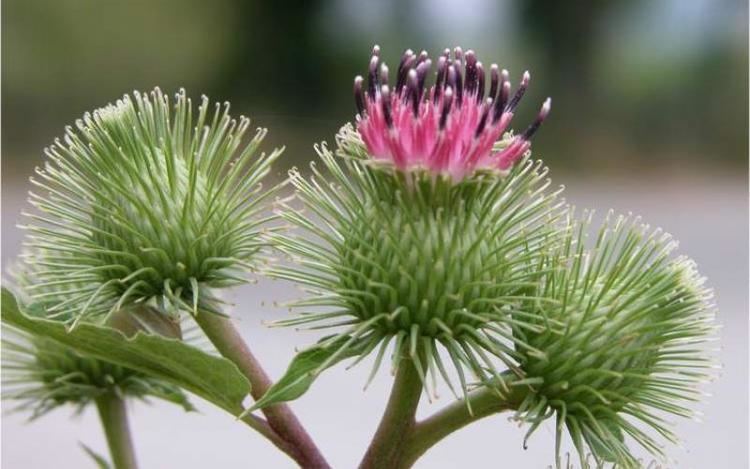
Greater burdock arctium lappa 2013 07 22
Description
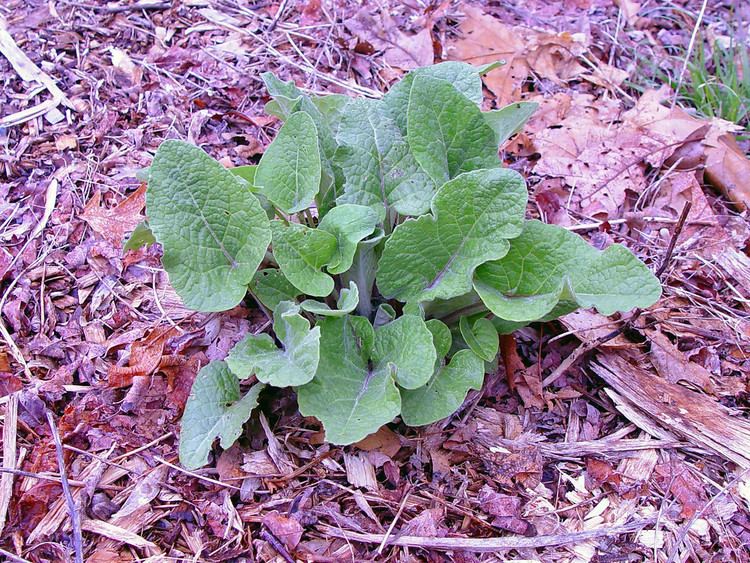
Greater Burdock is a biennial plant, rather tall, reaching as much as 3 m (10 ft). It has large, alternating, cordiform leaves that have a long petiole and are pubescent on the underside.
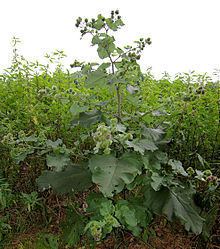
The flowers are purple and grouped in globular capitula, united in clusters. They appear in mid-summer, from July to September. The capitula are surrounded by an involucre made out of many bracts, each curving to form a hook, allowing them to be carried long distances on the fur of animals. The fruits are achenes; they are long, compressed, with short pappuses. The fleshy tap-root can grow up to 1 m (3 ft 3 in) deep.
Distribution and ecology
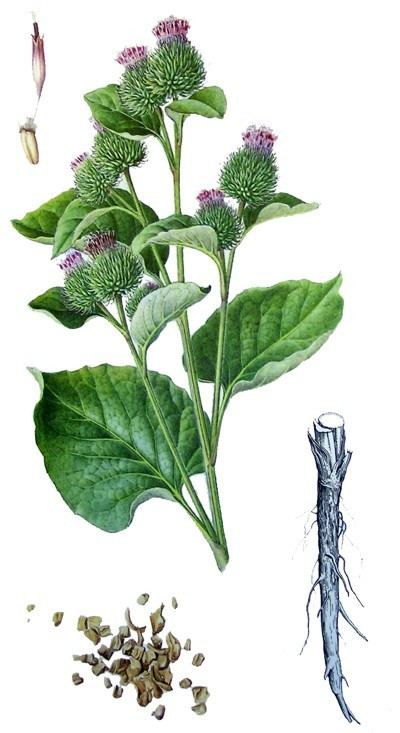
This species is native to the temperate regions of the old world, from Scandinavia to the Mediterranean, and from the British Isles through Russia, and the Middle East to India, China, Taiwan and Japan.
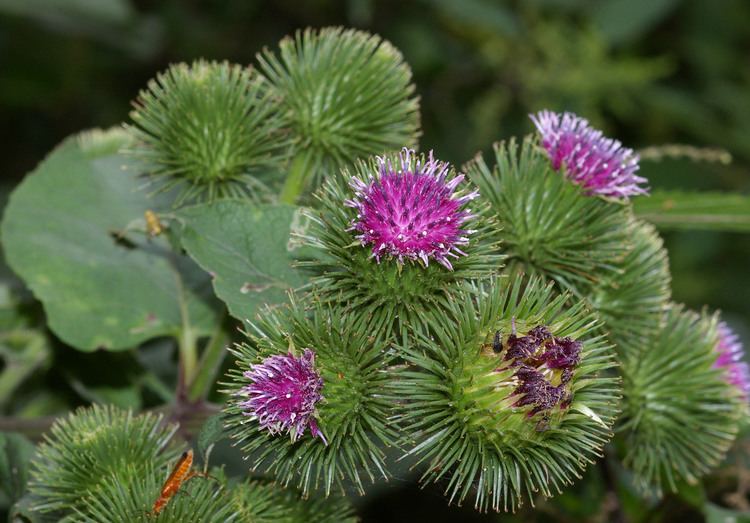
It is naturalized almost everywhere and is usually found in disturbed areas, especially in soil rich in nitrogen. It is commonly cultivated in Japan where it gives its name to a particular construction technique, burdock piling.

The leaves of Greater Burdock provide food for the caterpillars of some Lepidoptera, such as the Thistle Ermine (Myelois circumvoluta).
Cultivation
It prefers a fresh, worked soil, rich in humus, and should be positioned in full sunlight. Burdock is very reactive to nitrogen fertilizer. Propagation is achieved through sowing the seeds midsummer. The harvest occurs three to four months after the seeding until late autumn, when the roots become too fibrous.
Culinary use
Greater burdock root is known as niúbàng (牛蒡) in Chinese, which was borrowed into Japanese as gobō and Korean as ueong (우엉), and is widely eaten in the region. It was used in Europe during the Middle Ages as a vegetable, but now it is rarely used except in Italy, Brazil and Portugal, where it is known as bardana or "garduna". Plants are cultivated for their slender roots, which can grow about 1 meter long and 2 cm across. The root was traditionally used in Britain as a flavouring in the herbal drink dandelion and burdock, which is still commercially produced.
Immature flower stalks may also be harvested in late spring, before flowers appear. The taste resembles that of artichoke, to which the burdock is related.
In the second half of the 20th century, burdock achieved international recognition for its culinary use due to the increasing popularity of the macrobiotic diet, which advocates its consumption. The root contains a fair amount of dietary fiber (GDF, 6g per 100g), calcium, potassium, amino acids, and is low calorie. It contains polyphenols that causes darkened surface and muddy harshness by formation of tannin-iron complexes. Those polyphenols are caffeoylquinic acid derivatives.
The root is very crisp and has a sweet, mild, and pungent flavor with a little muddy harshness that can be reduced by soaking julienned/shredded roots in water for five to ten minutes. The harshness shows excellent harmonization with pork in miso soup (tonjiru) and takikomi gohan (a Japanese-style pilaf).
A popular Japanese dish is kinpira gobō, julienned or shredded burdock root and carrot, braised with soy sauce, sugar, mirin and/or sake, and sesame oil. Another is burdock makizushi, rolled sushi filled with pickled burdock root; the burdock root is often artificially colored orange to resemble a carrot. Burdock root can also be found as a fried snack food similar in taste and texture to potato chips and is occasionally used as an ingredient in tempura dishes.
Fermentation of the root by Aspergillus oryzae is also used for making miso and rice wine in Japanese cuisine.
Use in traditional medicine
Dried burdock roots (Bardanae radix) are used in folk medicine as a diuretic, diaphoretic, and a blood purifying agent. Anecdotal reports from the 19th century suggest that this medicinal plant has also been used by the Ojibwa tribe, and today, in form of an ingredient in Essiac tea for the alternative treatment of some cancers. As an oily macerate, it is a component of some cosmetics, shampoos and hair care products. The seeds of greater burdock are employed in traditional Chinese medicine particularly for skin conditions and in cold/flu formulas, under the name niubangzi (Chinese: 牛蒡子; pinyin: niúpángzi; some dictionaries list the Chinese as just 牛蒡 niúbàng.)
Chemical constituents
Burdock roots contain mucilage, sulfurous acetylene compounds, polyacetylenes and bitter guaianolide-type constituents. Seeds contain arctigenin, arctiin, and butyrolactone lignans.
